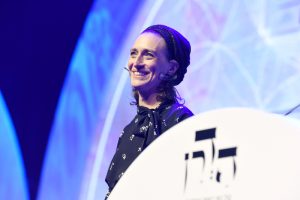I imagine that most people have some epiphanies during their lifetime wherein they gain insight into something that may have been illusive prior to their sudden realization of its truth, or even its existence. Perhaps it was a newfound understanding of a commonplace event. On occasion, it may even have had the effect of inoculating them against the malady of taking themselves too seriously. It may also have made them wary of cultural or religious distortions of various kinds.
The first epiphanic inoculation I can remember occurred in the 1950s when I was about 12 years old. I was an elementary school student at the Lubavitch Yeshiva on Park Avenue in Montreal. I must have been a very impressionable and naive kid, because the principal, Rabbi Feiglestock, called me into his office one day and said: “Eli. Don’t be fooled by a beard and payes [side locks].”
It was remarkable. Here was a man with a long beard and long payes wrapped around his ears warning me not to be taken in by these trappings. He continued: “Everyone in Europe had a beard and payes. Even the gonif [thief].” And then he asked me: “Do you know what the gonif did?” I must have stood there amazed because I have no recollection of answering. “The gonif took his tallit and tfillin [phylacteries] to shul in the morning, after which he would go home and eat breakfast. Then he would ply his trade! Later in the day he would return to shul to daven Minchah and Ma’ariv [afternoon and evening prayers]. If there was still time in the evening, he would continue to ply his trade.” And then Rabbi Feiglestock repeated to me: “Everyone in Europe had a beard and payes.”
To this day, I don’t know what I said or did that prompted him to protect a young boy against possible charlatans. Whatever it was, I am grateful for the warning not to be fooled by outer trappings. It was a profound lesson and a lifelong inoculation. More than 60 years later, I am still grateful for it.
My next epiphanic inoculation occurred a few years later when I was in Baron Byng High School, also in Montreal. In those days, the school was populated overwhelmingly by Jewish kids, reflecting the nature of the surrounding neighbourhood. One day, our teacher, Mr. Zweig, asked us a series of amusing questions.
The question that stumped us completely was “What’s a phoodnik?” When none of us could answer, he said: “A noodnik with a PhD.”
Somehow this observation stuck with me, so that years later when I received my doctorate, I wasn’t too impressed with it, or with me. As I matured, that episode served as a cautionary note that a title does not necessarily mean a person is a deserving human being. Indeed, of the 15 attendees of the Wannsee conference in 1942, where the Nazis’ Final Solution was hammered out, eight had the title “Dr.”
My third epiphanic inoculation took place many years later when I was reading a book about the Brzozow community, a small town in southeast Poland, where in their youth my parents and extended family lived. In this haunting book, I found the following anecdote that my late uncle, Isaac Roth, related. He had survived some 10 camps during the war, and he had a deep and lasting influence on me.
As a child, Isaac used to walk with his grandfather, Rabbi Shalom Gabel, the Rav of Brzowzow, to the “Klojze” [shul]. “The rabbi would start the prayers in his house and he would finish the silent prayer of Shmoneh Esrei before all the other worshippers. The grandson asked his grandfather the reason for conducting the prayers in such a hurry… His reply was, ‘My dear child, the Jewish People need parnassah [to make a living] and we should not hold them back even for one unnecessary minute.’”
These words have resonated with me ever since I first came upon them. To be a recipient of such a sensitive inheritance is something that I will always cherish.
Eli Honig taught physics at the Anne and Max Tanenbaum Community Hebrew Academy of Toronto for 31 years, and for longer than that at the University of Toronto, where he continues to teach part time.

